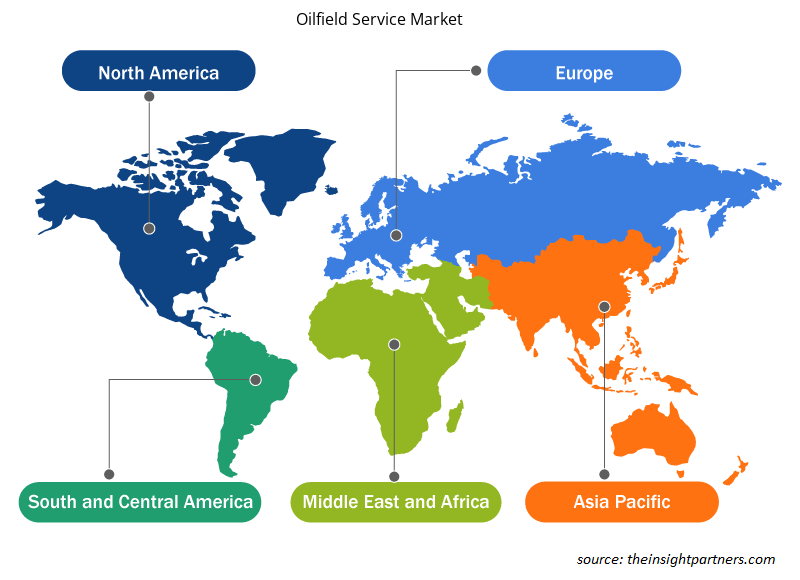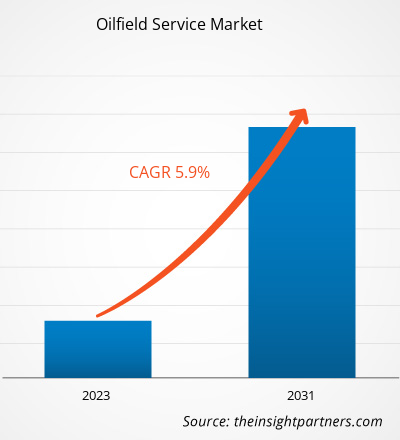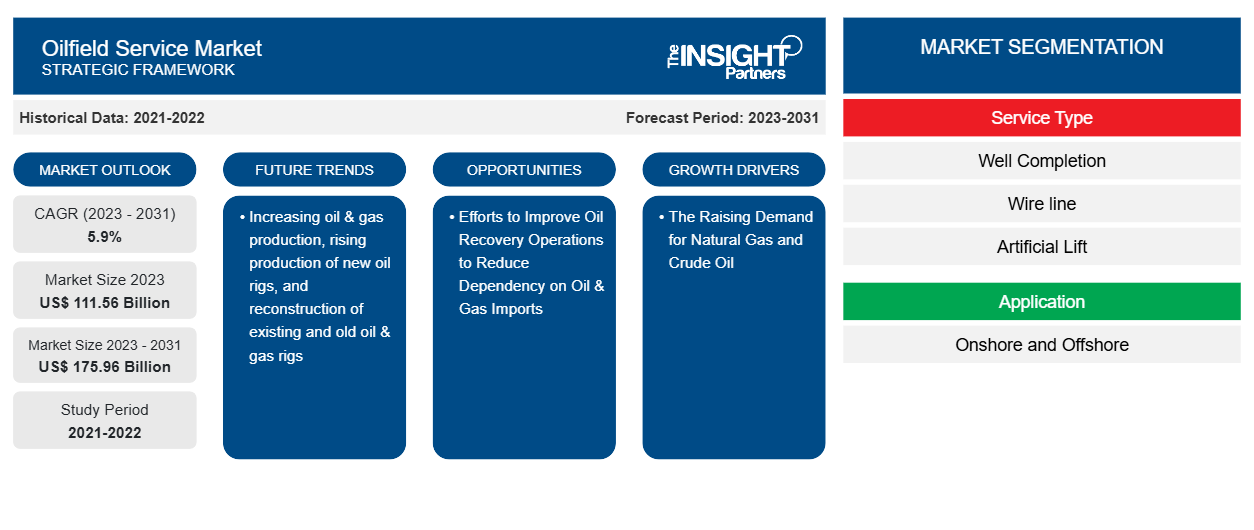오일필드 서비스 시장 규모는 2023년 1,115억 6,000만 달러에서 2031년 1,759억 6,000만 달러로 성장할 것으로 예상됩니다. 이 시장은 2023~2031년 동안 5.9%의 CAGR을 기록할 것으로 예상됩니다 . 석유 및 가스 생산 증가, 신규 석유 굴착 장비 생산 증가, 기존 및 오래된 석유 및 가스 굴착 장비의 재건은 시장의 주요 트렌드로 남을 가능성이 높습니다.
유전 서비스 시장 분석
석유전 서비스 시장은 분석 기간 동안 천연가스 프로젝트 수의 증가와 특히 원격 지역에서 새로운 석유전의 발견으로 인해 상당한 성장을 경험할 것으로 예상됩니다. 또한 다양한 국가의 기존 석유 및 가스 매장량이 고갈되면서 석유 및 가스 관련 제품을 공급하기 위한 국경 간 파이프라인에 대한 수요가 생겨 석유전 서비스 시장 성장이 촉진되고 있습니다. 석유 및 가스에 대한 비용 효율적인 운송 방법에 대한 수요가 증가하는 것은 전 세계 해외 석유 및 가스 부문에서 석유전 서비스 수요를 촉진할 것으로 예상되는 주요 요인 중 하나입니다.
유전 서비스 시장 개요
인구 증가와 산업화로 인해 전 세계적으로 에너지 수요도 증가하고 있습니다. 에너지 소비 증가로 인해 개발도상국과 선진국에서 석유와 가스에 대한 수요도 증가했습니다. 이로 인해 전 세계적으로 유전 서비스 수요가 증가했습니다. 또한 인구가 많고 1 인당 소득이 높으며 산업화가 빠르게 진행됨에 따라 아시아 태평양 지역의 해상 석유 및 가스 파이프 피팅과 플랜지 시장이 성장하고 있습니다. 이 지역은 원유와 가스의 가장 큰 소비국입니다. 또한 일본, 중국, 인도, 한국을 포함한 아시아 태평양 지역의 고도로 산업화된 국가들은 전반적인 에너지 소비가 증가하고 있다고 보고하고 있습니다. 이러한 국가들은 다양한 향상된 석유 회수 기술을 통해 국내 석유 생산을 늘리는 데 주력하고 있으며, 이는 증가하는 석유 수요를 충족시키기 위해 APAC 의 시장 성장을 지원하고 있습니다.
귀하의 요구 사항에 맞게 이 보고서를 사용자 정의하세요
이 보고서의 일부 또는 국가 수준 분석, Excel 데이터 팩을 포함하여 모든 보고서에 대한 사용자 정의를 무료로 받을 수 있으며 신생 기업 및 대학을 위한 훌륭한 혜택과 할인 혜택을 이용할 수 있습니다.
-
이 보고서의 주요 시장 동향을 알아보세요.이 무료 샘플에는 시장 동향부터 추정 및 예측까지 다양한 데이터 분석이 포함됩니다.
유전 서비스 시장 동인 및 기회
천연 가스 및 원유 수요 증가로 시장이 호조
석유 및 천연가스에 대한 수요는 전 세계적으로 꾸준히 증가하고 있습니다. 미국과 중국이 가장 큰 성장을 기록했습니다. 미국에서 석유화학 수요가 크게 증가하면서 소비도 증가했습니다. 산업 생산이 급증하고 트럭 운송 서비스에 대한 수요가 높아지면서 석유화학 수요가 늘어나고 있으며 , 이로 인해 유전 서비스 시장이 성장 하고 있습니다 . 게다가 전 세계적으로 항공 교통량이 증가하고 있으며, 특히 아시아 개발도상국에서 항공 교통량이 증가하는 것도 석유 소비가 증가하는 중요한 요인입니다.
석유 및 가스 수입 의존도 감소를 위한 석유 회수 작업 개선 노력
증기 주입 방법은 최근 수십 년 동안 상업적으로 활용되어 개발 후반 단계에 있는 기존 중질유 저장고에서 회수를 개선했습니다. 주입된 증기는 해상 유전의 전체 압력을 높여 원유의 이동 비율을 개선하고 효율적으로 흐르게 합니다. 결과적으로 향상된 석유 회수 방법은 기존 해상 유전에서 추출 프로세스를 활성화하는 데 도움이 됩니다. 다양한 국가가 국내 석유 생산을 늘리고 석유 수입에 대한 의존도를 줄이기 위해 기존 석유 자원을 회복하기 위한 노력에 투자하고 있습니다. 따라서 석유 및 가스 운영의 예상 확장은 향후 몇 년 동안 유전 서비스 시장 참여자에게 유망한 성장 기회를 제공할 것으로 예상됩니다.
유전 서비스 시장 보고서 세분화 분석
석유전 서비스 시장 분석에 기여한 핵심 세그먼트는 서비스 유형과 응용 분야입니다.
- 서비스 유형에 따라, 유전 서비스 시장은 우물 완성, 와이어라인, 인공 리프트, 천공, 드릴링 및 완성 유체, 기타로 구분됩니다. 기타 세그먼트는 2023년에 가장 큰 유전 서비스 시장 점유율을 차지했습니다.
- 재료 유형별로 시장은 육상 및 해상으로 세분화됩니다. 육상 세그먼트는 2023년 오일필드 서비스 시장에서 더 큰 점유율을 차지했습니다.
지역별 유전 서비스 시장 점유율 분석
석유전 서비스 시장 보고서의 지리적 범위는 주로 북미, 아시아 태평양, 유럽, 중동 및 아프리카, 남미 및 중부 아메리카의 5개 지역으로 나뉩니다.
북미의 유전 서비스 시장은 미국, 캐나다, 멕시코로 세분화됩니다. 이 지역은 광범위한 석유 및 가스 탐사 및 생산 프로젝트와 미국, 멕시코만, 캐나다에서 새로운 활동이 급증하면서 글로벌 유전 서비스 시장을 지배하고 있습니다. 그해 미국에는 912,962개의 석유 및 가스 시추공이 있었습니다. 미국의 수평 시추공 수의 증가와 굴착 장비당 석유 및 셰일가스 생산의 증가는 미국의 유전 서비스 시장 성장에 기여합니다. 고급 자체 적응형 유입 제어 완료 시스템과 같은 첨단 지능형 유전 서비스 시스템의 등장은 향후 몇 년 동안 북미 시장 성장을 촉진할 것입니다. 퍼미안 분지와 노스다코타에서 상당한 전망으로 인해 육상 장비에 대한 수요가 높을 것이며, 특히 비재래적 프로젝트가 점점 더 많아지면서 육상 부문의 유전 서비스 시장 성장이 활발해질 것입니다.
유전 서비스 시장 지역 통찰력
Insight Partners의 분석가들은 예측 기간 동안 오일필드 서비스 시장에 영향을 미치는 지역적 추세와 요인을 철저히 설명했습니다. 이 섹션에서는 북미, 유럽, 아시아 태평양, 중동 및 아프리카, 남미 및 중미의 오일필드 서비스 시장 세그먼트와 지리에 대해서도 설명합니다.

- 유전 서비스 시장에 대한 지역별 특정 데이터 얻기
유전 서비스 시장 보고서 범위
| 보고서 속성 | 세부 |
|---|---|
| 2023년 시장 규모 | 1,115억 6,000만 달러 |
| 2031년까지 시장 규모 | 1,759억 6,000만 달러 |
| 글로벌 CAGR (2023-2031) | 5.9% |
| 역사적 데이터 | 2021-2022 |
| 예측 기간 | 2023-2031 |
| 다루는 세그먼트 |
서비스 유형별
|
| 포함된 지역 및 국가 |
북아메리카
|
| 시장 선도 기업 및 주요 회사 프로필 |
|
시장 참여자 밀도: 비즈니스 역학에 미치는 영향 이해
오일필드 서비스 시장 시장은 소비자 선호도의 변화, 기술 발전, 제품의 이점에 대한 인식 증가와 같은 요인으로 인해 최종 사용자 수요가 증가함에 따라 빠르게 성장하고 있습니다. 수요가 증가함에 따라 기업은 제품을 확장하고, 소비자의 요구를 충족하기 위해 혁신하고, 새로운 트렌드를 활용하여 시장 성장을 더욱 촉진하고 있습니다.
시장 참여자 밀도는 특정 시장이나 산업 내에서 운영되는 회사나 기업의 분포를 말합니다. 주어진 시장 공간에 얼마나 많은 경쟁자(시장 참여자)가 존재하는지 그 규모나 총 시장 가치에 비해 나타냅니다.
석유전 서비스 시장에서 운영되는 주요 회사는 다음과 같습니다.
- 슐럼버거 리미티드
- 웨더포드 인터내셔널 주식회사
- 베이커 휴즈 회사
- 핼리버튼 회사
- 내셔널 오일웰 바코 주식회사
- 테크닙FMC
면책 조항 : 위에 나열된 회사는 어떤 특별한 순서에 따라 순위가 매겨지지 않았습니다.

- 오일필드 서비스 시장의 주요 기업 개요를 알아보세요
오일필드 서비스 시장 뉴스 및 최근 개발
오일필드 서비스 시장은 1차 및 2차 조사 이후의 질적, 양적 데이터를 수집하여 평가하는데, 여기에는 중요한 기업 간행물, 협회 데이터, 데이터베이스가 포함됩니다. 오일필드 서비스 시장의 몇 가지 개발 사항은 다음과 같습니다.
- 베이커 휴즈는 가이아나에서 오일필드 서비스 및 장비 사업의 확장을 발표했습니다. 베이커 휴즈는 가이아나에서 오일필드 서비스 및 장비를 위한 새로운 슈퍼센터 시설을 개발할 준비가 되었습니다. (출처: 베이커 휴즈, 보도자료, 2022년 2월)
- Schlumberger Limited는 Periscope Edge 다중 레이어 매핑-시추 서비스 출시를 발표했습니다. 이 서비스는 클라우드 솔루션과 결합된 새로운 측정 및 업계 최고의 역산 프로세스를 제공하여 시추하는 동안 저수지에서 정확한 지오 스티어링을 제공합니다. (출처: Schlumberger Limited, 보도자료, 2021년 8월)
유전 서비스 시장 보고서 범위 및 제공물
"석유전 서비스 시장 규모 및 예측(2021-2031)" 보고서는 아래 영역을 포괄하는 시장에 대한 자세한 분석을 제공합니다.
- 범위에 포함된 모든 주요 시장 세그먼트에 대한 글로벌, 지역 및 국가 수준의 유전 서비스 시장 규모 및 예측
- 석유전 서비스 시장 동향 및 동인, 제약 및 주요 기회와 같은 시장 역학
- 자세한 PEST 및 SWOT 분석
- 주요 시장 동향, 글로벌 및 지역 프레임워크, 주요 업체, 규정 및 최근 시장 개발 사항을 포괄하는 유전 서비스 시장 분석
- 시장 집중도, 히트맵 분석, 유명 업체 및 최근 유전 서비스 시장 개발 사항을 포함하는 산업 환경 및 경쟁 분석
- 자세한 회사 프로필
- 과거 분석(2년), 기준 연도, CAGR을 포함한 예측(7년)
- PEST 및 SWOT 분석
- 시장 규모 가치/거래량 - 글로벌, 지역, 국가
- 산업 및 경쟁 환경
- Excel 데이터세트
최근 보고서
사용 후기
구매 이유
- 정보에 기반한 의사 결정
- 시장 역학 이해
- 경쟁 분석
- 고객 인사이트
- 시장 예측
- 위험 완화
- 전략 기획
- 투자 타당성 분석
- 신흥 시장 파악
- 마케팅 전략 강화
- 운영 효율성 향상
- 규제 동향에 발맞춰 대응























 무료 샘플 받기 - 유전 서비스 시장
무료 샘플 받기 - 유전 서비스 시장